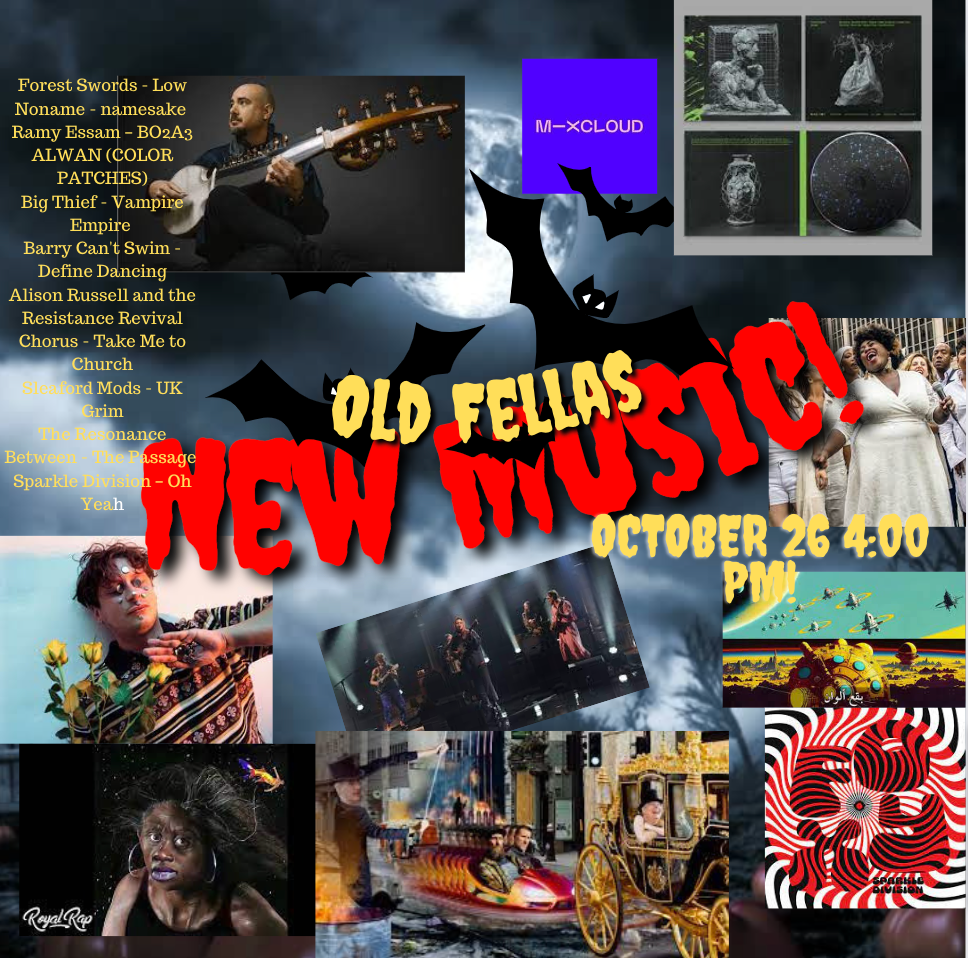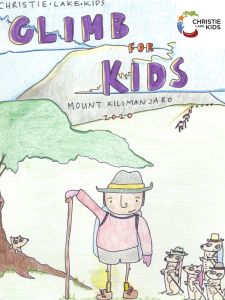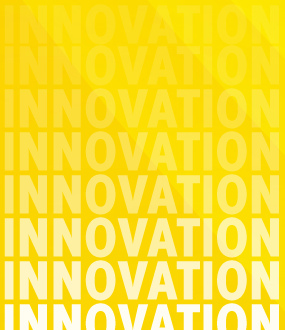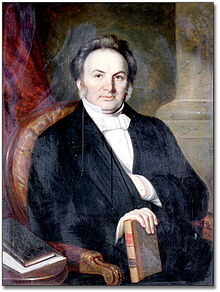Episode 54 Old Fellas New Music

Forest Swords – Low
Noname – namesake (Pitchfork)
– BO2A3 ALWAN (COLOR PATCHES)
Big Thief – Vampire Empire (Pitchfork)
Barry Can’t Swim – Define Dancing
Alison Russell and the Resistance Revival Chorus – Take Me to Church (Exclaim!)
Sleaford Mods – UK Grim
The Resonance Between – The Passage (Frequencies)
Sparkle Division – Oh Yeah
Noname – namesake (heard on Pitchfork)

I didn’t know what this song was about (see below), but I kept on seeing Noname on my playlist so it was time to play one of her songs.
So, what is namesake about?
from Confidence
Noname has never been shy about calling out big names, and on her new track, “namesake,” the Chicago rapper disses titans of the music industry as hypocrites for working with the NFL. Spitting in a rapid-fire flow over a slinky instrumental from Slimwav, Noname specifically hits out at JAY-Z, Kendrick Lamar, Rihanna, and Beyoncé on the Sundial cut.
On the second verse, Noname makes it clear where she stands regarding Jay and his relationship with the NFL. “I ain’t fuckin’ with the NFL or JAY-Z/ Propaganda for the military complex,” she raps. “The same gun that shot Lil Terry/ Out West, the same gun that shot Senair in the West Bank/ We all think the Superbowl’s the best thing.”
From noname
Go, Rihanna, go
Genius
Watch the fighter jet fly high
War machine gets glamorized
We play the game to pass the time
Go, Beyoncé, go
Watch the fighter jet fly high
War machine gets glamorized
We play the game to pass the time
Go, Kendrick, go
Watch the fighter jet fly high
War machine gets glamorized
We play the game to pass the time
Big Thief – Vampire Empire (heard on Pitchfork)
From Wikipedia
Big Thief is an American indie folk band based in Brooklyn, New York. Its members are Adrianne Lenker (guitar, vocals), Buck Meek (guitar, backing vocals), Max Oleartchik (bass), and James Krivchenia (drums).[1]
Here is Big Thief on the amazing KEXP
This is yet another band that I know nothing about, but they have made a lot of music and Pitchfork loves them.
There’s an imperial effortlessness to Big Thief’s music-making that’s hard not to find dazzling: five full-lengths, including a double album, three solo Adrianne Lenker albums, all in seven years, with no “minor” one, no asterisk in the catalog. Once you start grasping for comparison points, you wind up pretty quickly in superlatives territory: Elliott Smith. Bob Dylan. Prince.
what is imperial effortlessness??
This is what they have done since 2016:
5 albums
2 EPs
21 singles
4 music videos
Grammy nominations in 2020, 2021, 2023
Alison Russell and the Resistance Revival Chorus

The Take Me to Church single is part of Spotify’s Singles Series. The series asks artists to reimagine one of their own songs along with a song they love. Some more from Exclaim! Magazine on Montrealer Allison Russell, an artist we play on a regular basis on this show.
…in 2021 her track “Nightflyer” was on Barack Obama’s annual best-of-the-year playlist, and in 2022 she earned three Grammy nominations and won the JUNO Award for Contemporary Roots Album of the Year, becoming the first Black artist to do so. “The timing of it, the fact that we were at a conjunction of pandemic, of major social justice, and racial reckoning. There’s a lot of things that happened for this record to be listened to in the way that it was and continues to be,” she reflects. “I’m still pondering these things in my heart.”
The Resonance Between – The Passage

There is very little written about The Resonance Between, probably because this is a collaboration, not a band.
So, here is a bit about the project from Bandcamp
The Resonance Between (TRB) is the new collaborative album by artists Alam Khan, Arjun K. Verma, and Del Sol Quartet — an ensemble of remarkably synergistic vision and virtuosity.
Despite their many aesthetic similarities, Indian classical and European classical music have rarely been combined, and generally have been done so in mere juxtapositions rather than with fluid integration. TRB presents a groundbreaking new level of fusion between these cultural genres, crafting a contemporary instrumental sound for this unique original work that is so much more than simply the sum of its parts.
Here is a good article on the collaborators for this project from Seattle Sacred Musi
Alam Khan, Arjun K. Verma, Del Sol Quartet: The Resonance Between
and a little more about this amazing project from World Music Central
The album highlights the Indian classical mastery of Khan and Verma, who teamed up with cross-cultural composer Jack Perla. The American string ensemble Del Sol Quartet, led by violist Charlton Lee, adds a unique touch with their multicultural approach to chamber music. The strings of the quartet beautifully complement the Indian instruments, resulting in cinematic soundscapes that are both emotionally expressive and thought-provoking.
Forest Swords – “Low” from Bolted
Forest Swords is the stage name for English record producer and DJ, Matt Barnes. He has released three studio albums, of which Bolted is his latest. This Old Fella is stepping out of his usual wheelhouse and presenting a little UK electronica this week.
Mojo magazine calls the album “ a master class in sound design, Bolted creeps up slowly then engulfs you.”
The online Treble magazine is much better at describing this tune than me.

As a dedicated fan of science fiction, I’m a keen believer in the concept of the multiverse. One of the lesser alternate timelines I imagine for myself involves dropping my political science degree to study music theory and composition instead. I envision falling in love with jazz and postmodern classical music, pursuing an advanced degree or two, and finding experimental electronic music earlier that I did in this timeline. Eventually, I would have landed a gig teaching at either a mid-sized high school or decent community college, and made my own music on the side. And when my students ask me about the sort of art I both create and appreciate, I think it might exist in the same sphere of music as the work of Forest Swords.
Ramy Essam – “BO2A3 ALWAN (Color Patches)” from Metgharabiin (Outsiders)
Ramy Essam is an Egyptian musician who came to prominence during the Arab Spring uprisings in Egypt in 2011. His songs of protest in Cairo were seen by millions of people. His music was considered incendiary by the Mubarak regime and he was forced to seek exile in Sweden where he has resided ever since. Here he is captivating an enormous audience in Tahir Square in 2011.
His new release includes this mesmerizing selection which comes with an equally captivating video.
Barry Can’t Swim –“ Define Dancing” from When Will We Land
Barry Can’t Swim is just one guy, Josh Mainnie, a London-based producer and musician. He makes a type of laid back tuneful house music with an emphasis on piano and interesting samples. For example, see if the repetitive piano riff in “Define Dancing” doesn’t remind you of a sound off of Pink Floyd’s 1973 Dark Side of the Moon.
Do you have a question for Barry can’t Swim? Well here’s ten answered.
10 QUESTIONS WITH BARRY CAN’T SWIM, FOLLOWING THE RELEASE OF HIS NEW EP ‘MORE CONTENT’

1. Can you describe your sound in 3 words?
“Fairly jazzy stuff.”
2. How has your childhood in Edinburgh influenced the musician that you are today?
“It’s definitely a big influence, although I would say the people I grew up with shaped my music more than the city itself in all honesty. Edinburgh isn’t amazing at supporting the grassroots scenes, especially compared to somewhere like Glasgow. But I met a lot of incredibly talented musicians growing up there.”
3. If you wrote a screenplay about your life, what would it be called and who would play you?
“Probably Sonja from Eastenders or Steve Buscemi because we all share boggly eyes. It would be called the mindboggling life of Barry.”
4. You worked with many different artists to produce this EP, but who would be your dream collaborator?
“There are so many amazing people I’d love to collab with, but Jai Paul probably pips it, purely because of how elusive he is. I just wanna talk to him man.”
5. What is the greatest highlight of your career so far?
“I think the first-time seeing people singing along to your tunes when you’re playing live. That is such a mad thing to experience, man. Seeing people you’ve never met before in places you’ve never been to before singing along is still so surreal.”
Sleaford Mods – “UK Grim” from UK Grim
Sleaford Mods are a duo, from Nottingham, U.K. They have been around for almost 20 years. Prolific (a dozen albums) and popular in their native land, Sleaford Mods haven’t gained much traction on this side of the Atlantic possibly due to their spoken word rants of British class struggles and angst delivered in a thick Midland’s accent. Check out their latest.
Here is Pitchfork’s assessment of their latest offering.

It’s the irascible British duo’s most varied album to date. Just don’t expect anything to change.
Sleaford Mods don’t make music about how terrible things are in hopes that they will get better. Over the past decade, Andrew Fearn and Jason Williamson have channeled public discontent and everyday malaise in the UK, scrutinizing their country’s faults as well as their own. And though they’ve found personal growth and commercial success, the Mods’ outlook hasn’t brightened.
If this peaks your interest, Sleaford Mods have been the subject of several full length documentaries like this.
Sparkle Division – “Oh Yeah” from Foxy
I am getting lazy here so I am going to describe Sparkle Division by lifting straight and from the All Music Guide. “Sparkle Division‘s play lounge funk and blunted instrumental hip-hop that still had a degree of poignancy to it, given that two of its guests had passed on since its creation, and another song paid tribute to the late David Bowie. The collaboration’s sequel, Foxy, fully dives into the realm of fantasy, loosely following a story line taking place in 1969, about a pair of Hollywood film interns attending a lavish party at a Beverly Hills estate owned by a pimp and drug dealer named Foxy. The music sounds much closer to an Austin Powers-like revision of the late ’60s than the era itself, retaining elements of exotica and spy soundtracks but adding ’90s-style lounge grooves and break beats.“Oh Yeah!” picks up this thread and dives head-first into late-’90s atmospheric jungle, with busy beat programming skittering beneath fluttering sax. Maybe the next Sparkle Division record will be an imaginary soundtrack to a Home Alone-style holiday caper.” — AMG




















